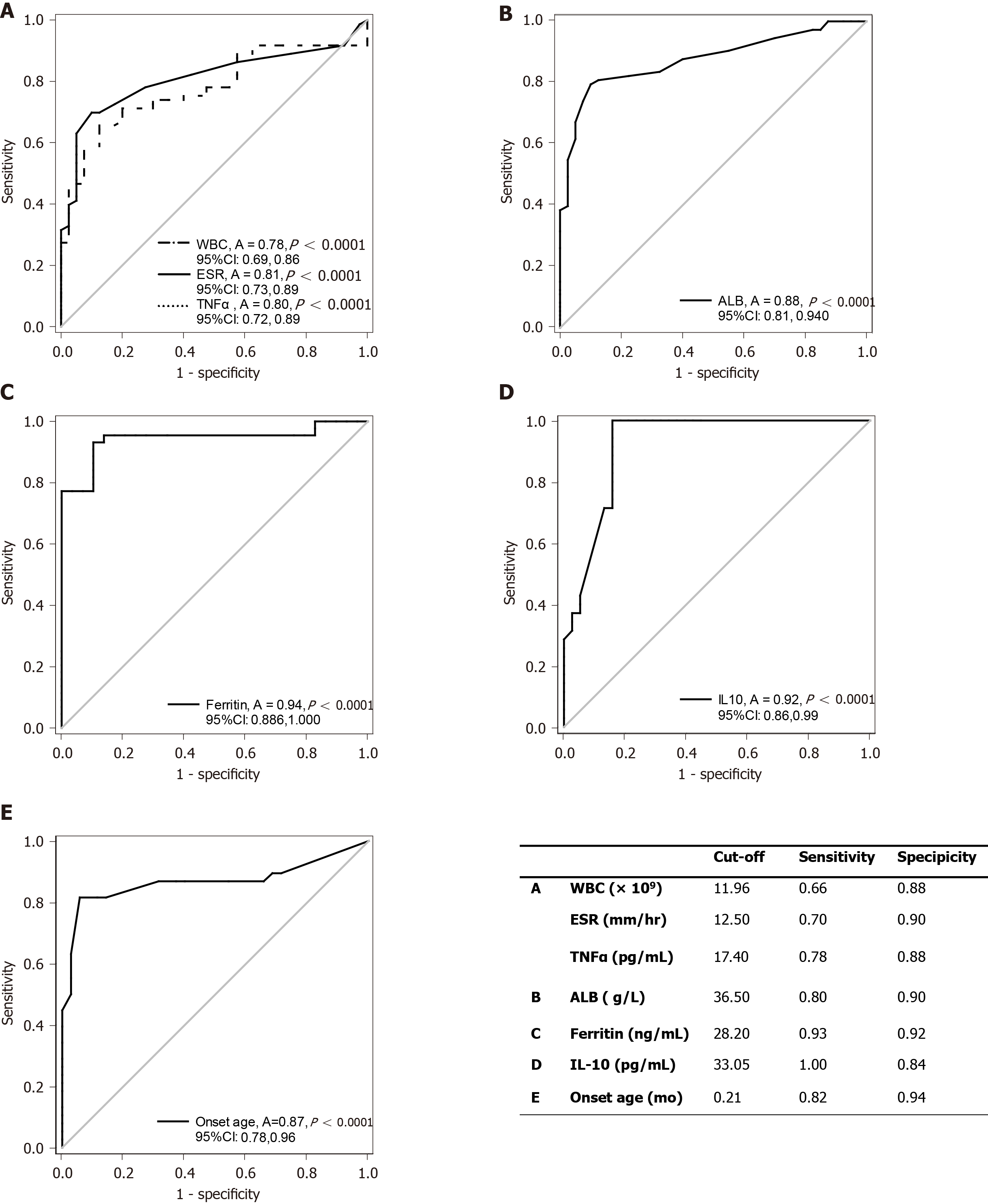Copyright
©The Author(s) 2021.
World J Gastroenterol. Jan 7, 2021; 27(1): 92-106
Published online Jan 7, 2021. doi: 10.3748/wjg.v27.i1.92
Published online Jan 7, 2021. doi: 10.3748/wjg.v27.i1.92
Figure 1 Receiver operating characteristic curve analysis for diagnostic indicators.
A and B: Parameters that may be used to distinguish allergic proctocolitis from infantile-onset inflammatory bowel disease (IO-IBD). The increased peripheral white blood cell count, erythrocyte sedimentation, rate and tumor necrosis factor (TNF)-α, as well as the reduced albumin levels were risk factors for the diagnosis of IO-IBD, and TNF-α and albumin levels had higher sensitivity and specificity; C: Serum ferritin level has high diagnostic value in discriminating IO-IBD patients with gene mutation (M-IBD) or without (NM-IBD) when serum ferritin levels are above 28.20 ng/mL. It might indicate the existence of pathogenic gene mutations in IO-IBD patients; D and E: Serum interleukin (IL)-10 level and onset age can be used to screen IL-10RA mutation in M-IBD patients. If an infant got IO-IBD within a week in life or a patient’s serum IL-10 levels were higher than 33.05 pg/mL, the presence of IL-10RA gene mutations was strongly suggested. WBC: White blood cell; ESR: Erythrocyte sedimentation rate; TNF: Tumor necrosis factor; ALB: Albumin; IL: Interleukin; CI: Confidence interval.
- Citation: Su W, Yu Y, Xu X, Wang XQ, Huang JB, Xu CD, Xiao Y. Valuable clinical indicators for identifying infantile-onset inflammatory bowel disease patients with monogenic diseases. World J Gastroenterol 2021; 27(1): 92-106
- URL: https://www.wjgnet.com/1007-9327/full/v27/i1/92.htm
- DOI: https://dx.doi.org/10.3748/wjg.v27.i1.92









